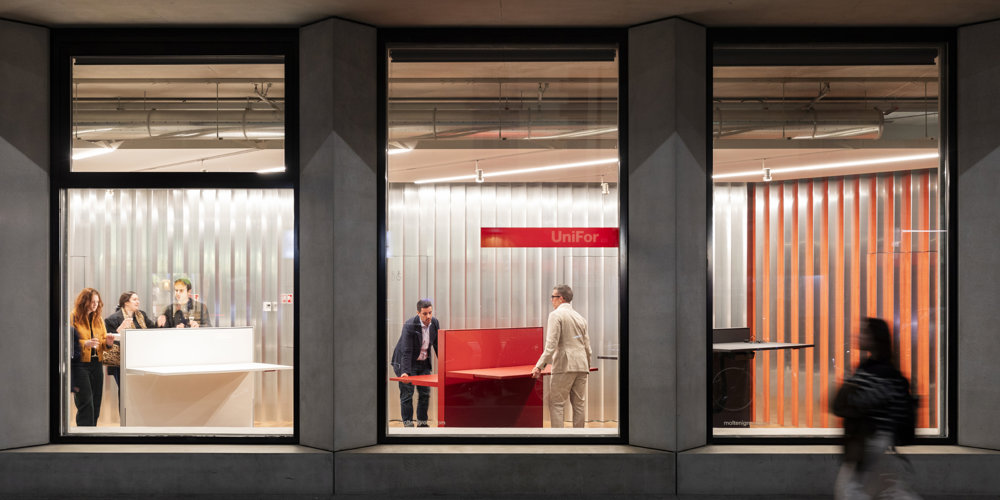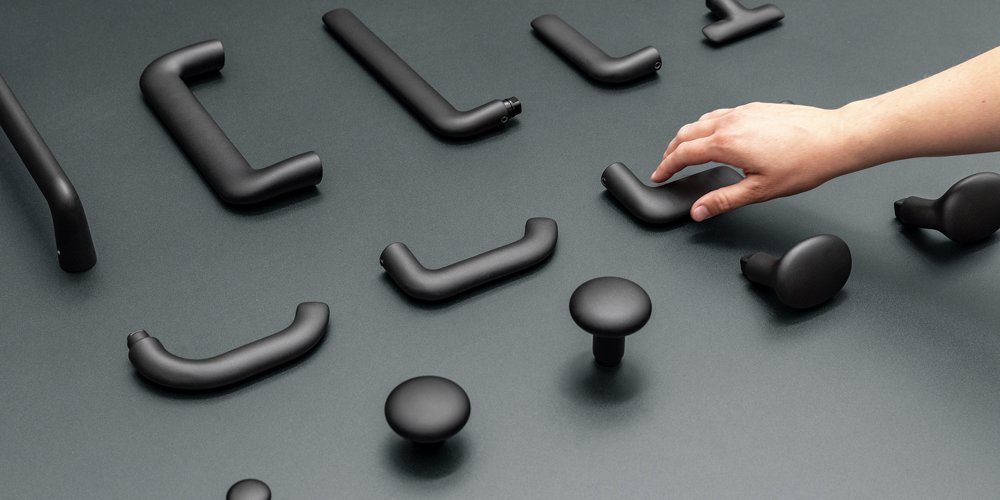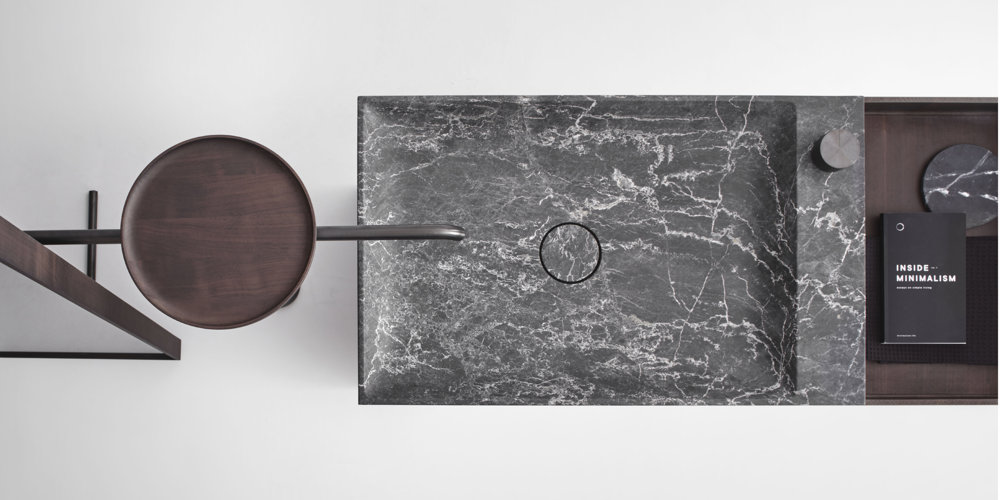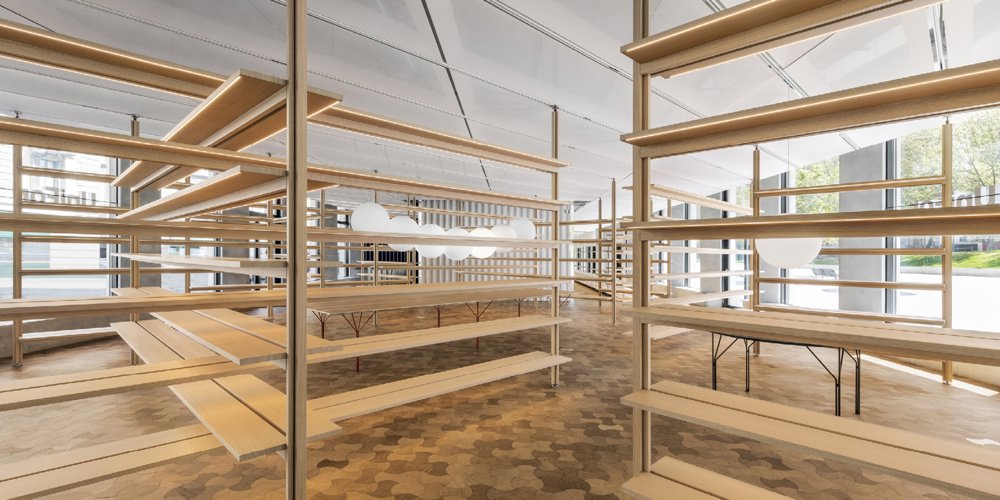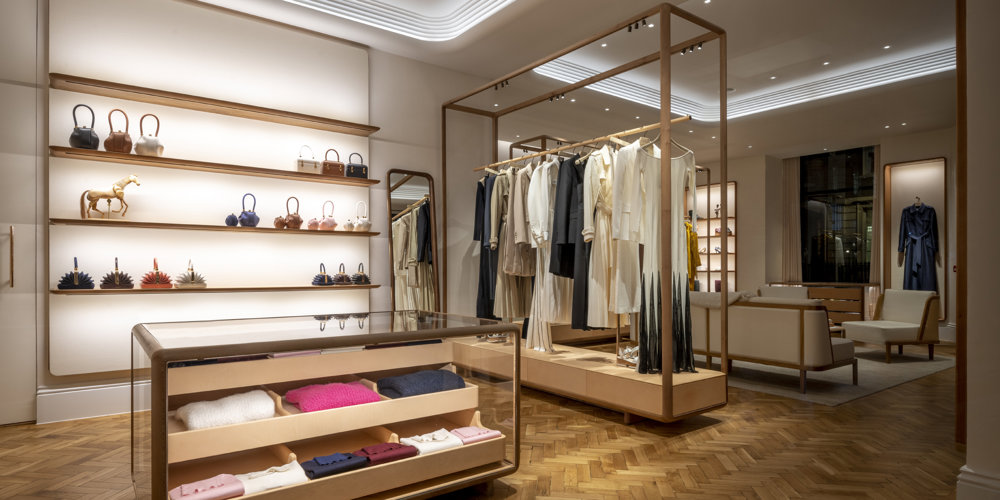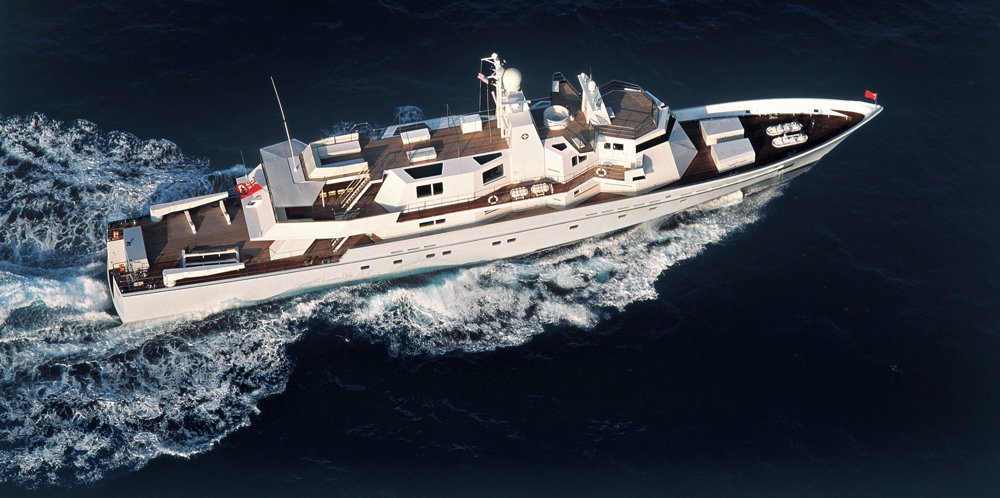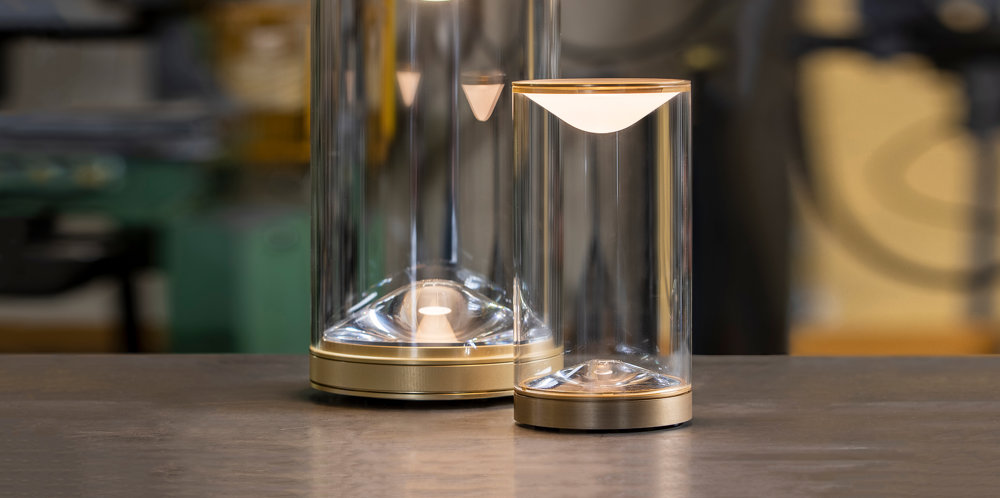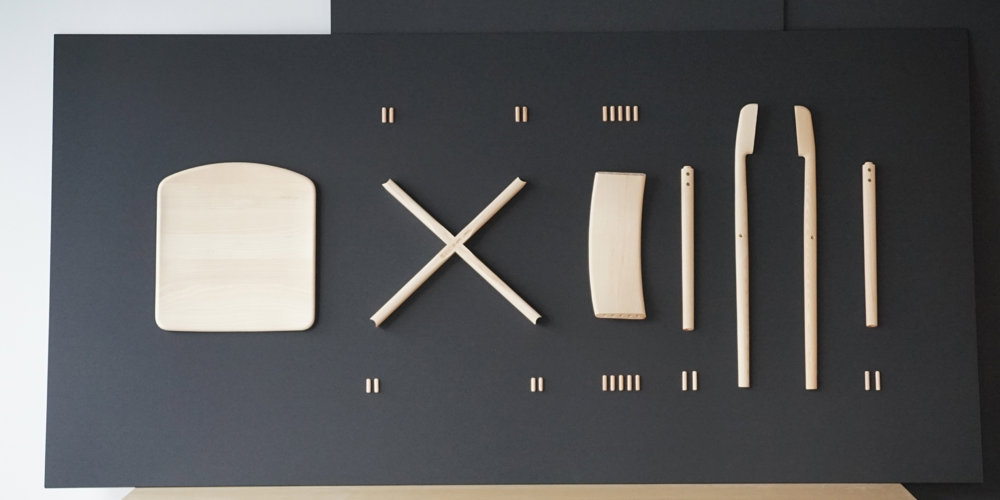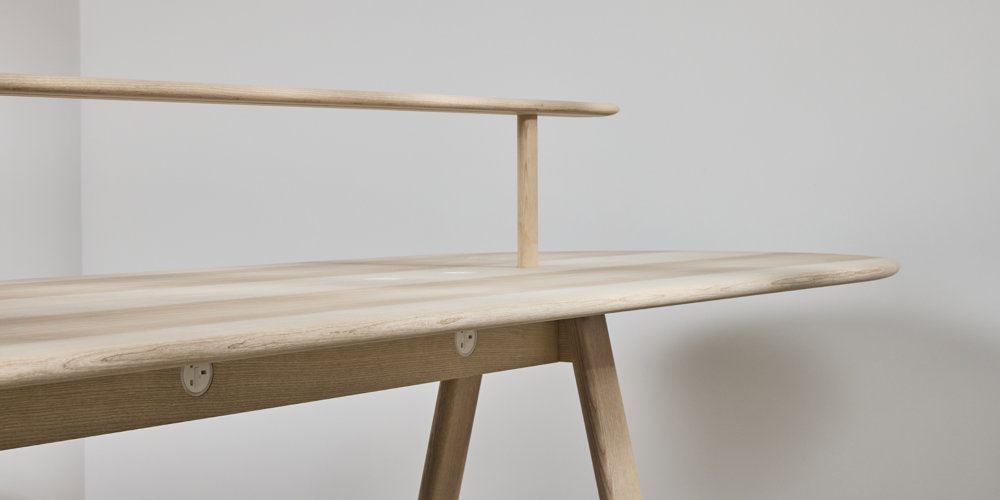The Arc table is the latest addition to a range of products designed by Foster + Partners Industrial Design for Molteni & C, Milan. Drawing inspiration from tensile fabric structures, its form is generated by software developed to create flowing architectural designs.
The sculptural base is a single sweeping form anchored by three legs - between each extension, the material curves upwards to balance the table top. The top is a tempered glass disc, measuring either 140 or 150 centimetres in diameter. Three thin stainless steel plates are UV bonded to the glass and allow the base to be safely and discreetly secured using just three small screws.









